PUPPY BEHAVIOURS
- Maddie Neal
- Jul 6, 2020
- 5 min read
Mouthing, chewing, jumping up and accidents in the house are all part of having a puppy and all normal behaviours. These are unwanted behaviours but they are always how dogs explore and communicate. We need to teach our dogs, especially puppies, that these behaviours are not acceptable but also to teach them new and correct behaviours to use instead. Try not to get angry at your pup when they chew or have an accident, punishing them is more likely to confuse them and break their trust than help them. They are learning and it is up to us to help them succeed.
Houstraining
We all want our dogs to be housetrained, there’s nothing worse than standing in a puddle in the kitchen you didn’t see. Any dog can be housetrained, regardless of age, but it can take weeks or even months for the dogs to be fully trained. It’s important to be consistent and try not to get frustrated with any accidents that occur. Just clean up and keep going. Here are a few simple things you can do to help your pup with housetraining.
1) Control the environment
2) Routine
3) Reward
Controlling the area your dog can go in will avoid unwanted accidents in the house. Dogs don’t like to toilet in their living area, so a crate and playpen can make a real difference when house training. A comfortable and safe place they will spend time when you aren’t there to supervise, they are not going to want to toilet in their space. You should allow them to explore other rooms in the house when you are there to watch them. You want them to learn that the whole house is the living area and not a place to do their toilets. Take your pup to the garden or same toilet area when they need to go out, they will learn that this is the appropriate place to toilet. Young dogs need to go to the toilet often and you shouldn’t expect them to hold it for a long time. Take your dog out first thing in the morning, when they wake up from a nap, 10 minutes after eating or drinking, after playtime and right before bed. They will also need to go out once or twice in the night while they are learning.
When you take your dog out for a toilet break have them on lead and take them over to a specific area where you want them to toilet. It may take 10 minutes while they sniff about and explore but wait them out. Try to ignore any play behaviours or interaction until after they have toileted, they are easily distracted and may forget what they are there to do. When your pup successfully toilets in the garden you should praise them so they know they are doing the right thing. Use an upbeat voice so they know that they have done well and reward them with play or a treat.
If you see your pup toileting in the house try to interrupt them and then take them outside to finish and reward heavily once they are done. If they have accidents but you’re weren’t there to stop them, just clean it up and try to supervise them so it doesn't happen again. If they are having a lot of accidents try to add more toilet breaks into the day and limit the number of rooms they have access too so you can supervise them better.
Mouthing
All puppies mouth and chew. It’s one of the ways they explore the world and it helps them when they are teething. To start managing this behaviour you should make sure anything you don’t want chewing is out of reach from your pup and give them plenty of toys that they can chew on and will help with teething. Instead of teaching your dog not to chew, you should be teaching them what is appropriate to chew. If you see your pup going walking towards your shoes or sofa with a toothy grin, try to interrupt them before they get there and get them to come to you instead. Don’t grab them or the shoe as you want them to choose what to do. You can clap your hands or do a dance, just make yourself more interesting and get them to come to you. Praise them and give them an appropriate thing to chew on instead.
Pups often mouth or nip when they are trying to play with you. They often learn from their mum and littermates not to do this but sometimes it is up to use to teach them the appropriate play behaviours and how to interact. If possible, we should try and stop the behaviour before it occurs by teaching the pup other ways to communicate. They will learn quickly and it will protect you from getting nipped with their sharp teeth. You can do this with treats. If you know your puppy is likely to nip while playing, be ready with some tasty treats and when you feel they are starting to get nippy let them sniff the treats and ask them to sit. Once they have sat, reward them with the treats and your attention. It may take a few weeks for them to learn fully but they will learn to ask for attention by sitting rather than nipping. Toys are also great when teaching your pup not to nip because it gives them something appropriate to grab and play with. When playing with your pup, have some toys on hand so you can get their attention onto the toy, rather than you, if they start getting mouthy. Make the toy super exciting by moving it along the floor so the pup wants to play with it.
If you are playing with your puppy and they do nip you, try not to get upset or angry. Instead say “no” to your pup in a low and unexcited voice and take your attention away. Stand up and move away from your pup or put them back in their pen so they can’t get to you. Wait a few minutes and then go back to playing with them. They will learn that nipping stops the play rather than starting it.
Jumping Up
Jumping up is a common behaviour in puppies and one we don’t seem to mind because they are so cute and we just want to cuddle them! However, it is less cute when they are 30kg and almost as big as you. The best way to stop your dog from jumping is to teach them as a puppy that jumping up isn’t appropriate.
Teaching your pup not to jump up is all about consistency. You have to stop them from jumping up and make sure everyone else in the house does the same. Start by rewarding your pup when they have all 4 paws on the floor, let them know that this is good behaviour. When you approach them and they try to jump up, take a step back so they don’t physically connect. Avoid pushing your dog down as this is still giving them attention. Approach again and continue to step back if they try to jump up. If they hesitate and don’t jump up, even for a brief second, reward them and give them plenty of attention. You want your pup to learn that they get attention when they keep all 4 paws on the floor. Start with just you and your pup before adding more people or strangers who will be more exciting and harder not to jump on.
You can also practice by calling your pup between two people, it practices recall as well as appropriate greetings. When you call the pup to you, have your hands down low with a treat to encourage them to you and to keep their feet on the floor.





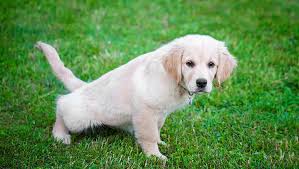
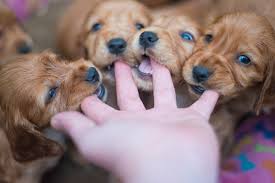


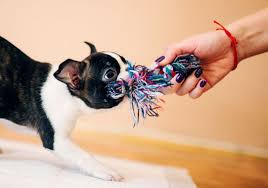
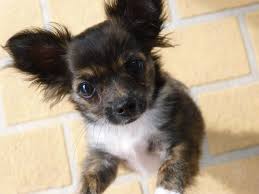


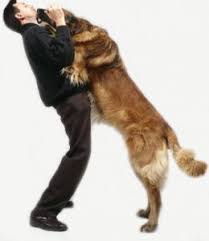



Comments